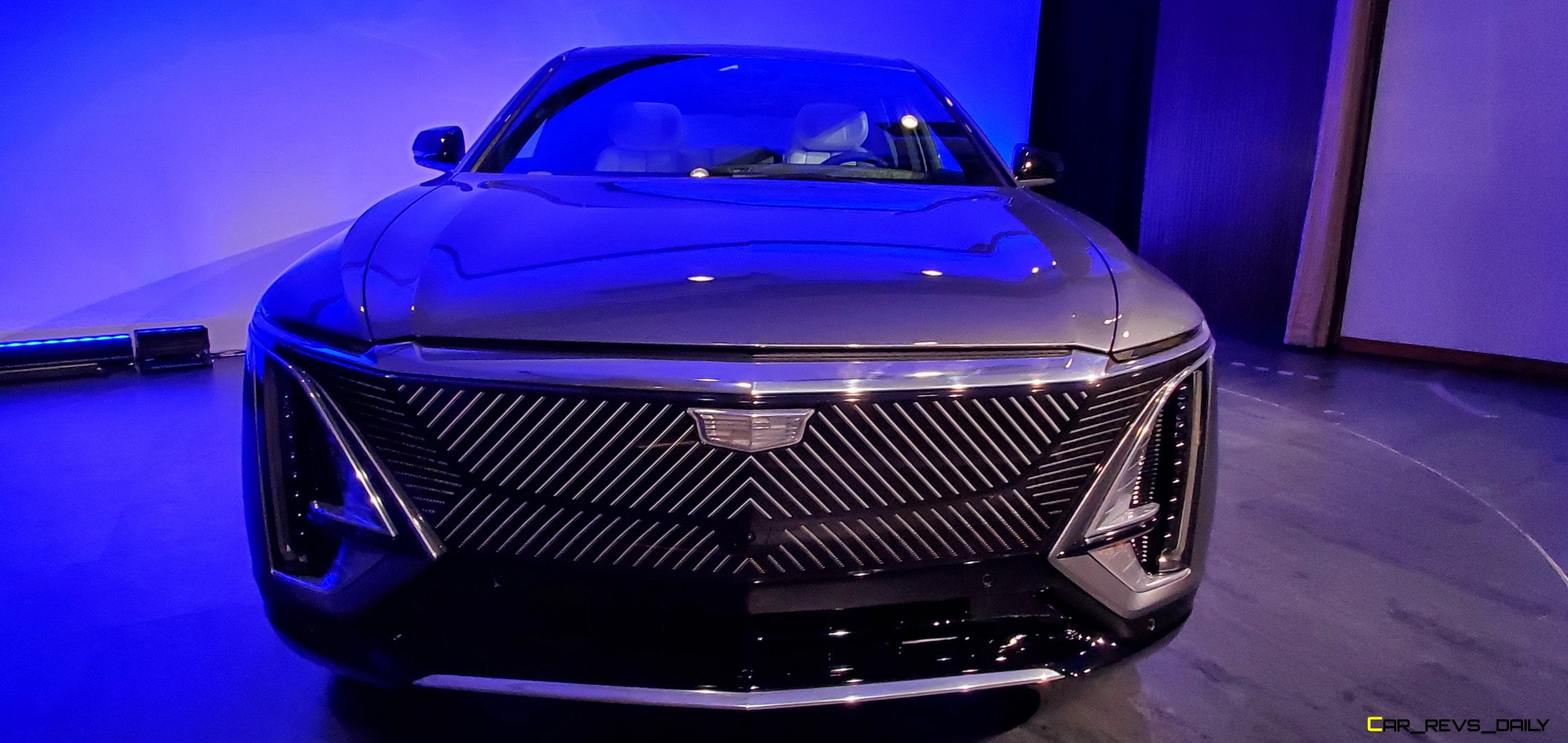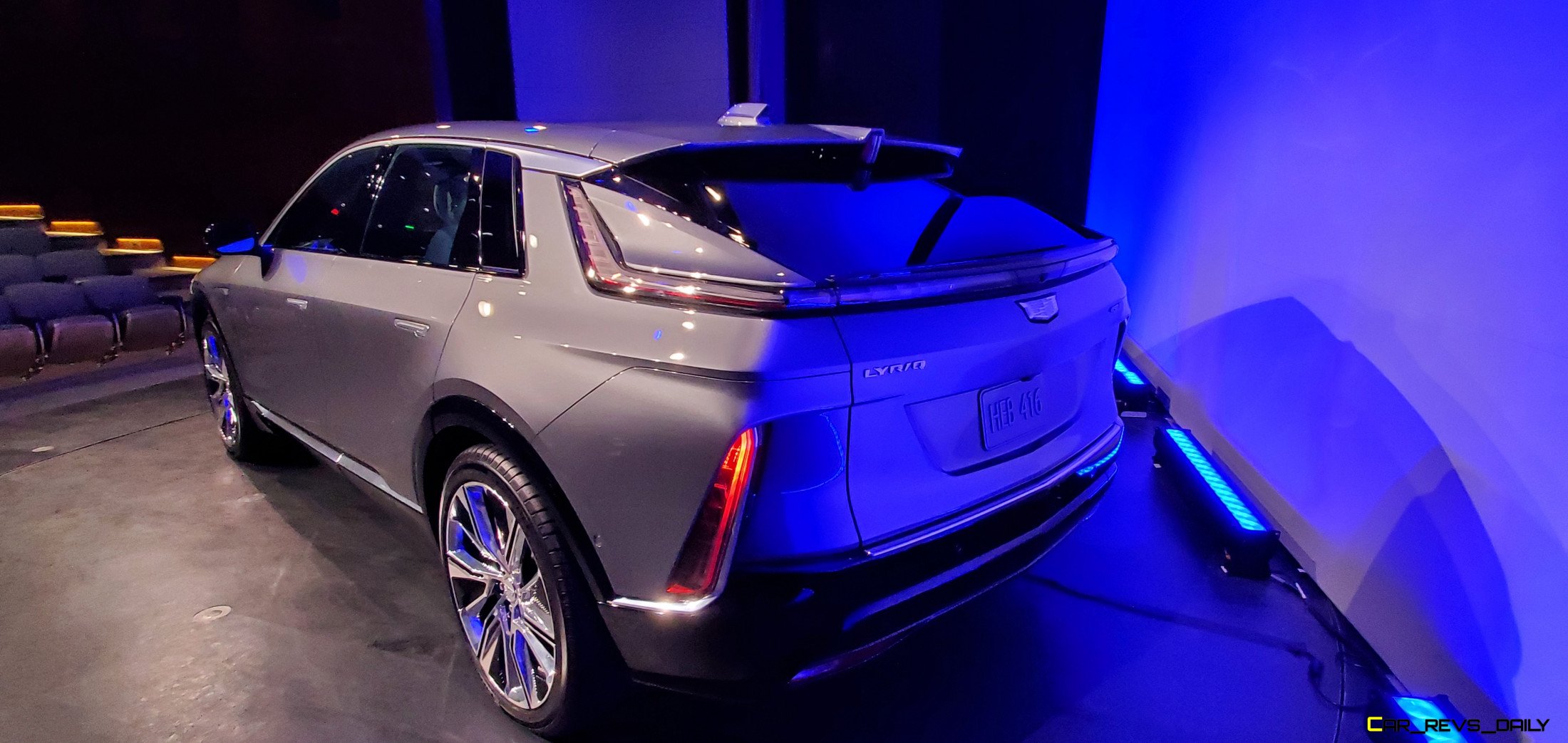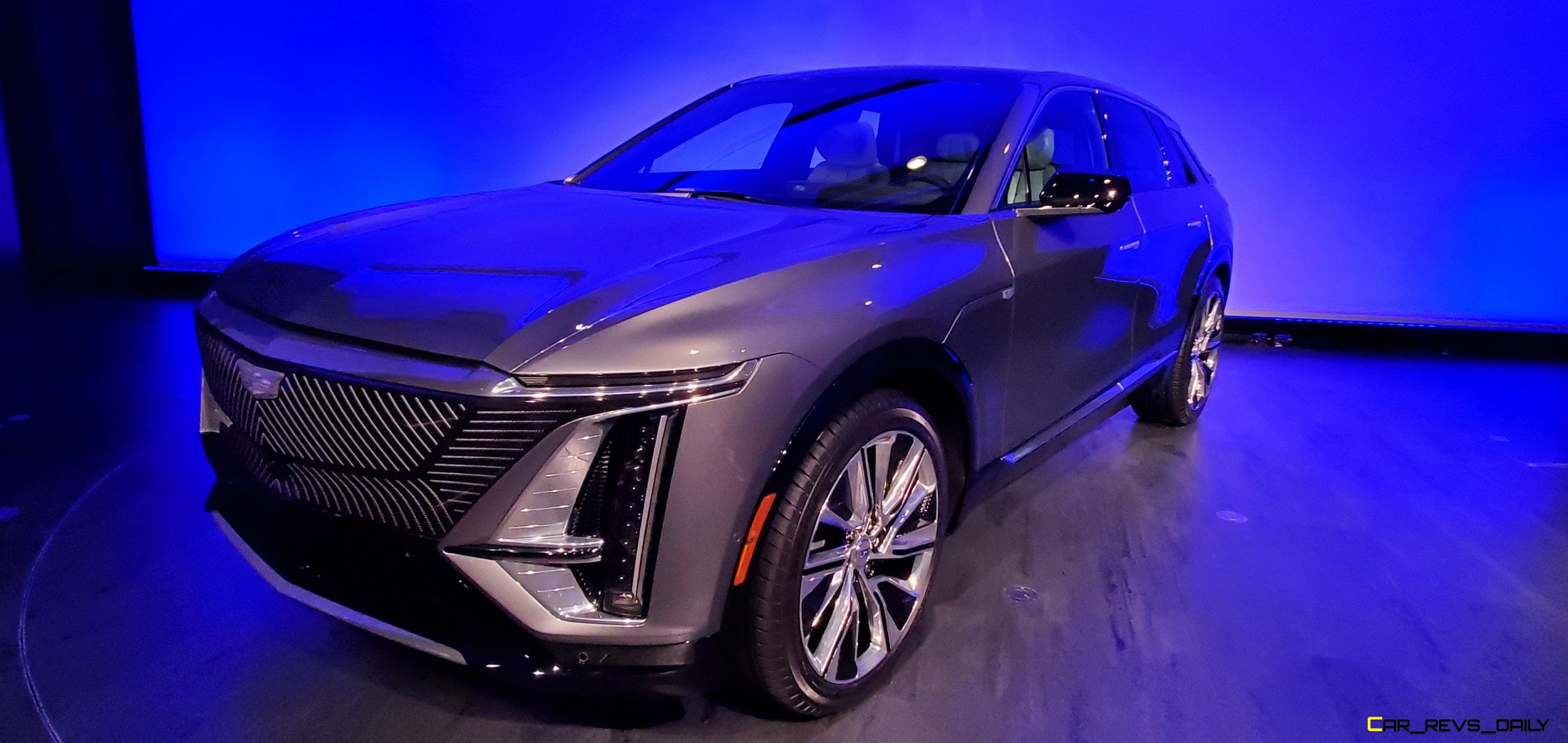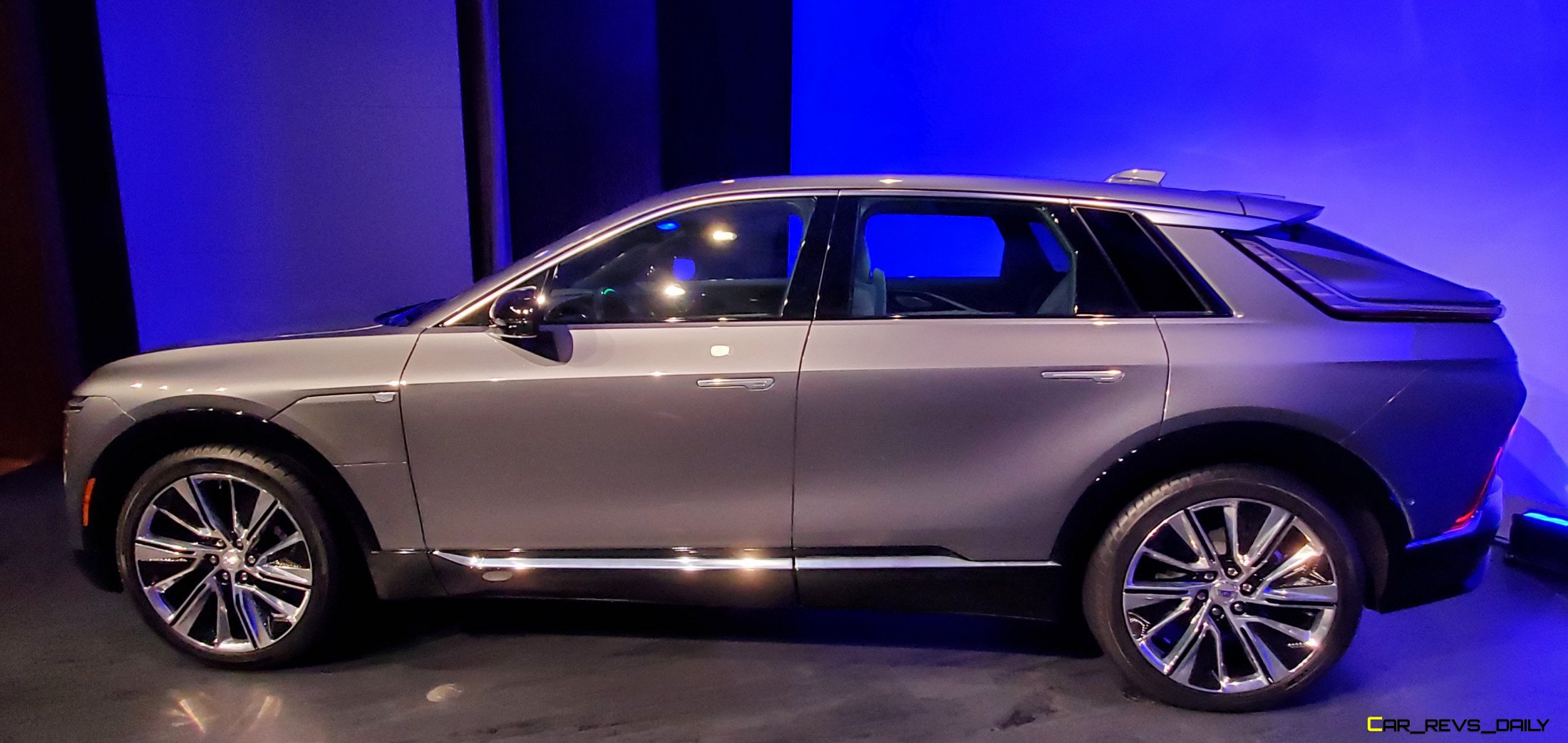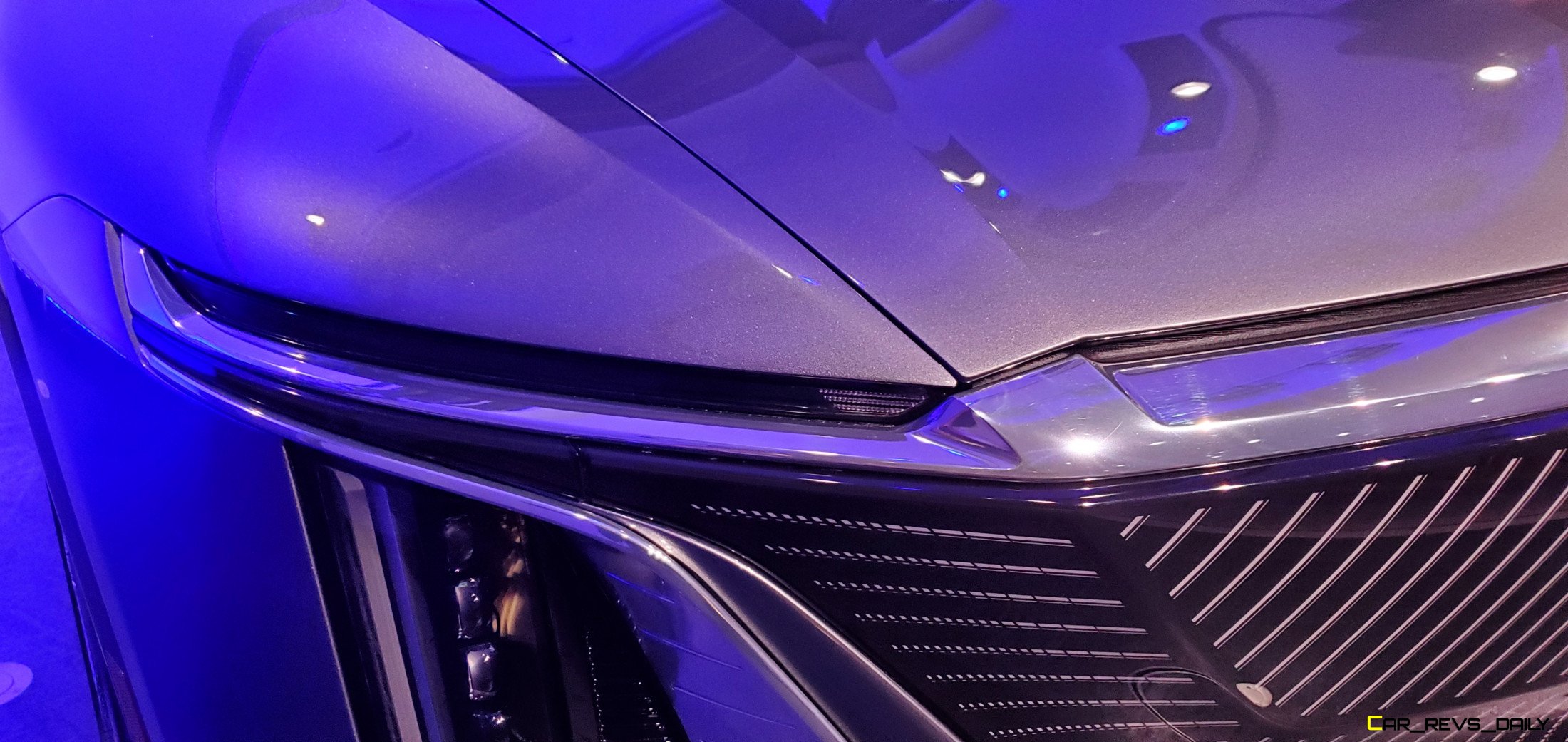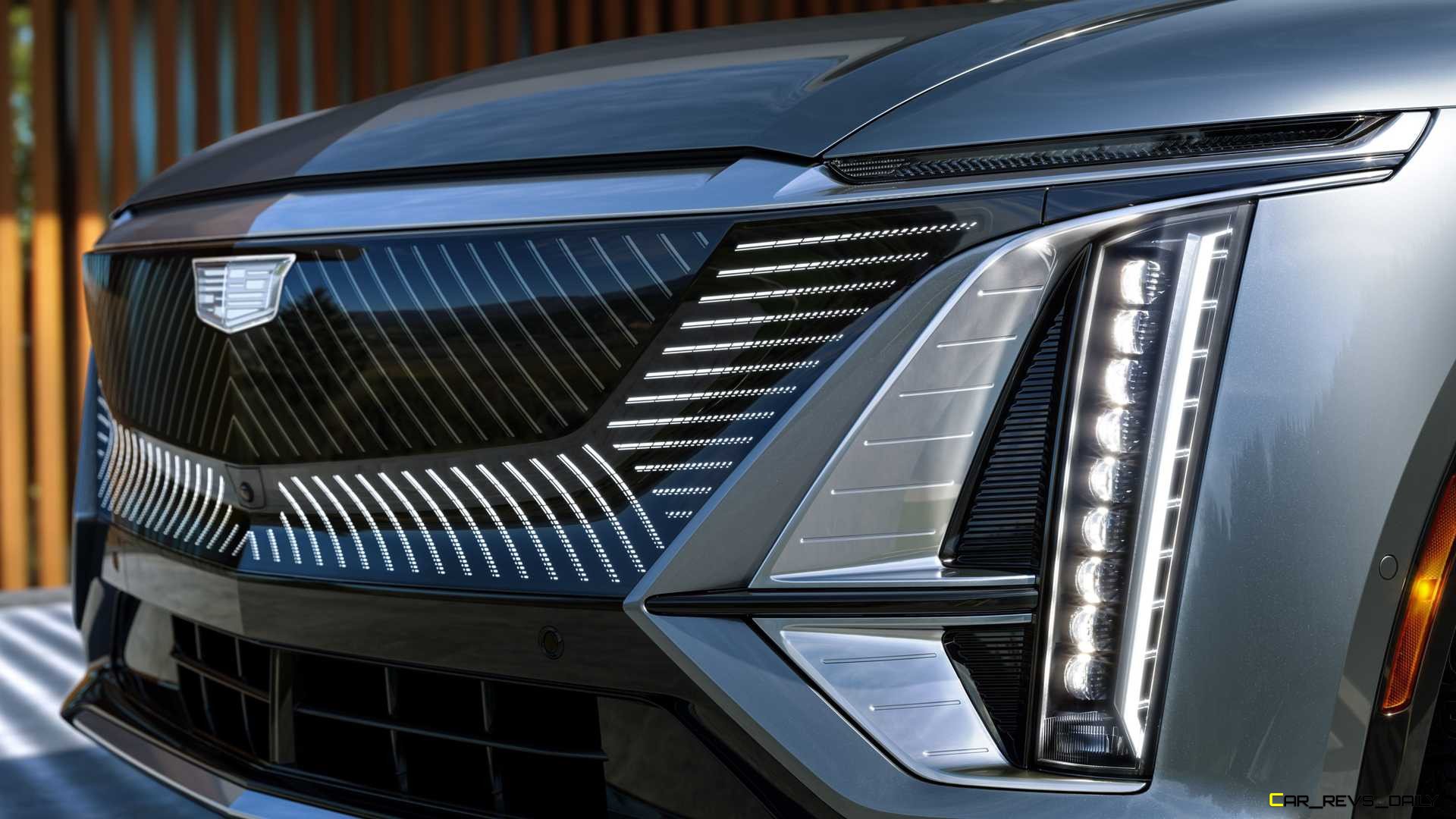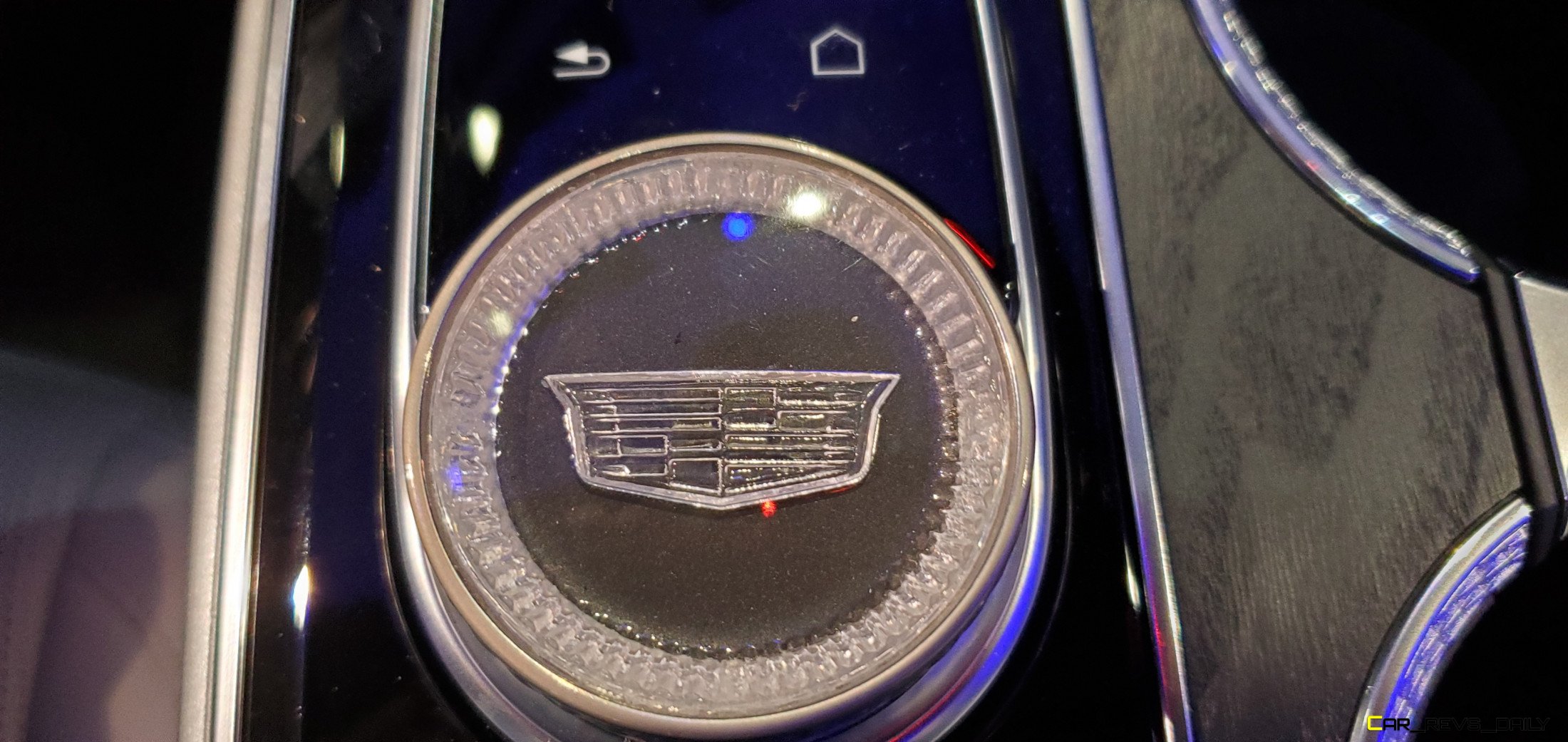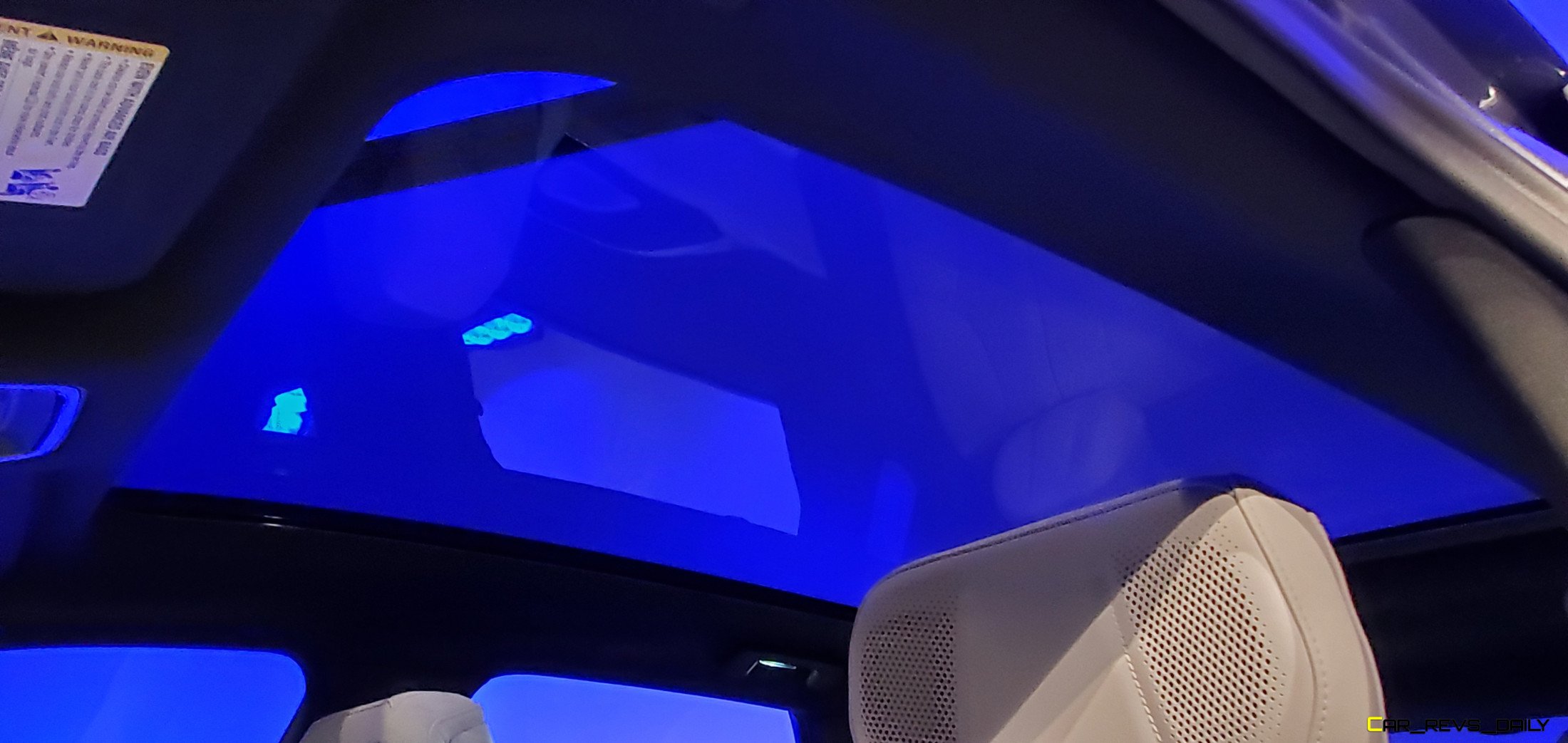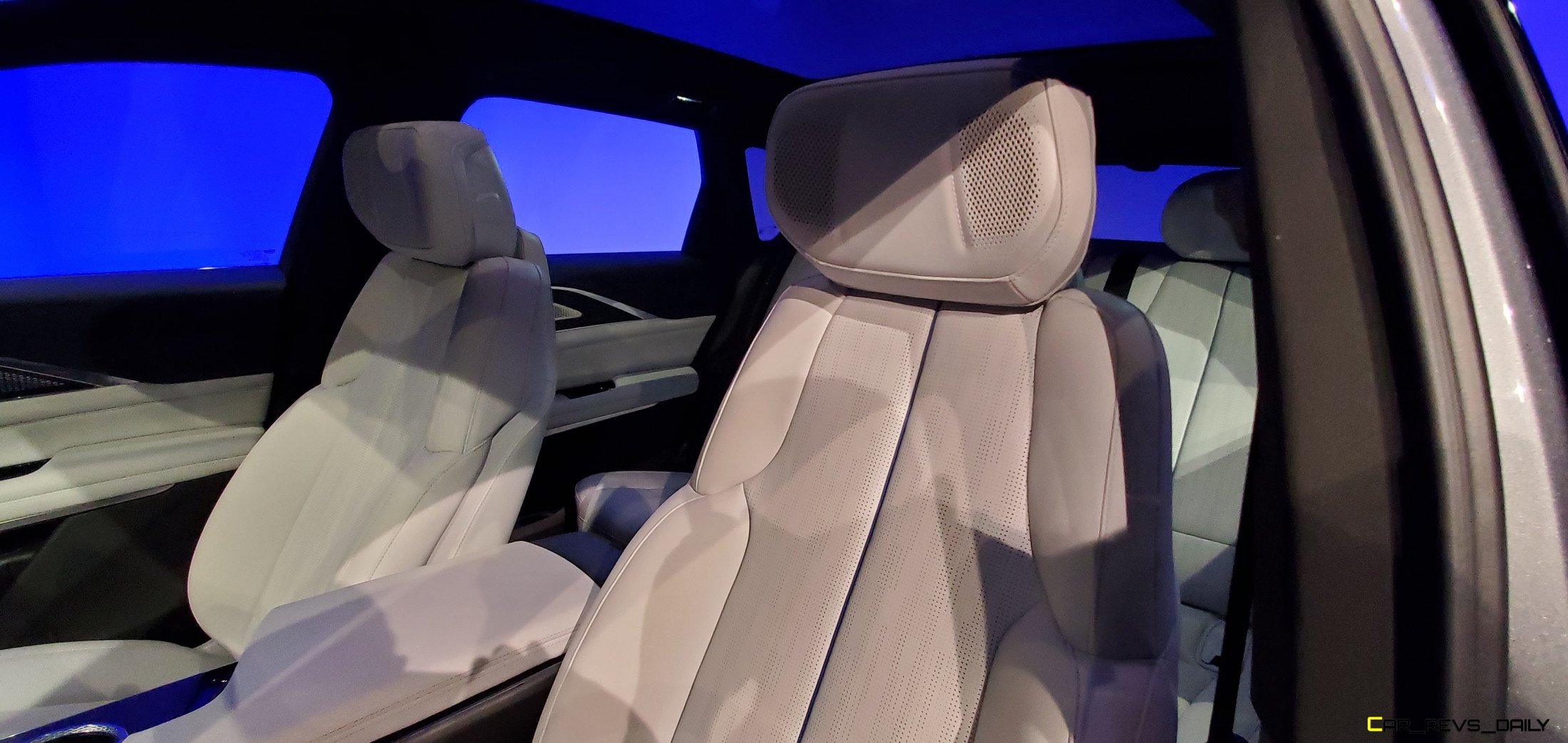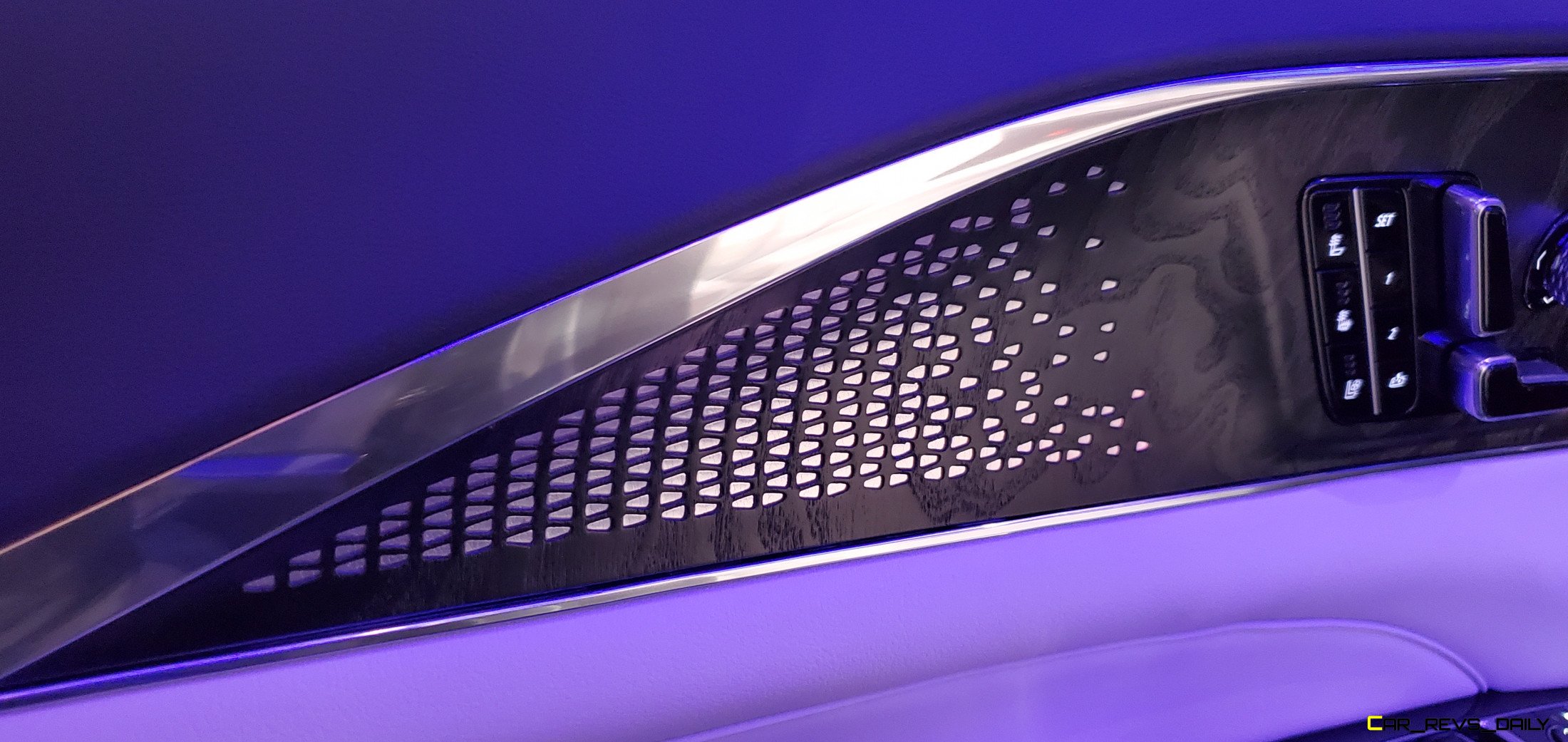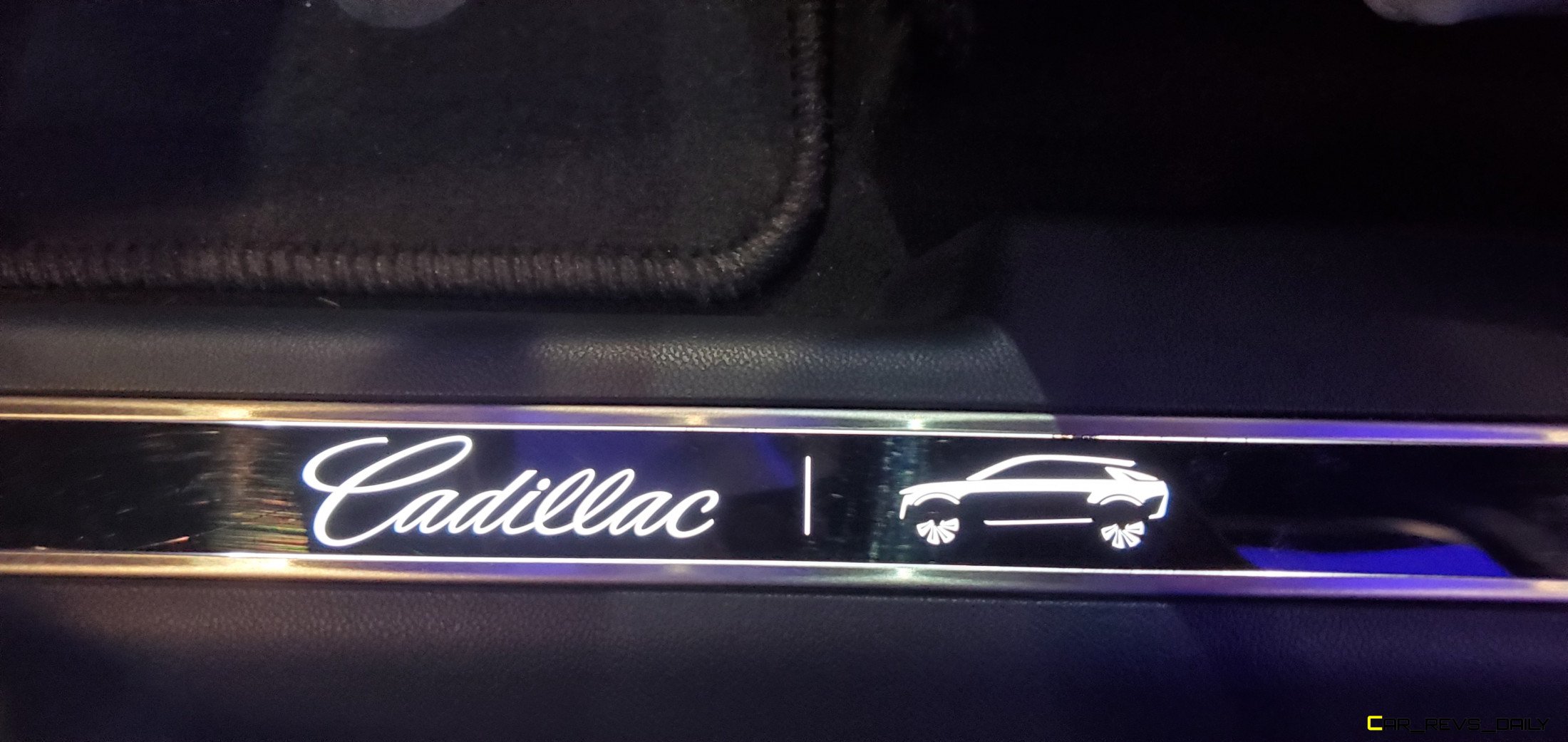When Cadillac unveiled the 2023 Lyriq EV SUV, it promised that the model would elevate the levels of luxury that a Cadilac model could provide while also serving as an elegant example of its Ultium technology in action. The Lyriq certainly appears to have the goods to pull it off and it even looks elegant in pictures, but how does it measure up in the real world? Cadillac invited us to GM Tech Center to spend some time with the Lyriq in-person to see some of its inner workings in person.
Near Production Exterior Radiates With Lighting, State Of The Art Engineering
Our time with the Lyriq was limited to a near-production prototype Cadillac had in one of the auditoriums at their Research and Development facility. But while this meant that we have to wait another day to see how the Lyriq drives, we still managed to learn some new things about the EV. For starters, the exterior styling is a very potent mixture of style and function. The front fascia incorporates an impressive amount of light thanks to a clever “lighting engine” as well as a light-up crest which works together with lighting below it to create a clever radiance effect. Cadillac engineers we spoke with claimed that since there is no engine to help keep cool, they were able to make greater use of the space where the grille would typically be.
The front fascia also works together with the rear lighting to create a miniature light show when an owner walks up to the Lyriq at night with the car being able to sense the fob in an owner’s pocket. Once that happens, 736 choreographed LEDs kick into action and help give the EV a very potent calling card at night. In addition to the elaborate lighting tricks, the Lyriq’s exterior also bakes in an impressive amount of function to go along with its futuristic profile.
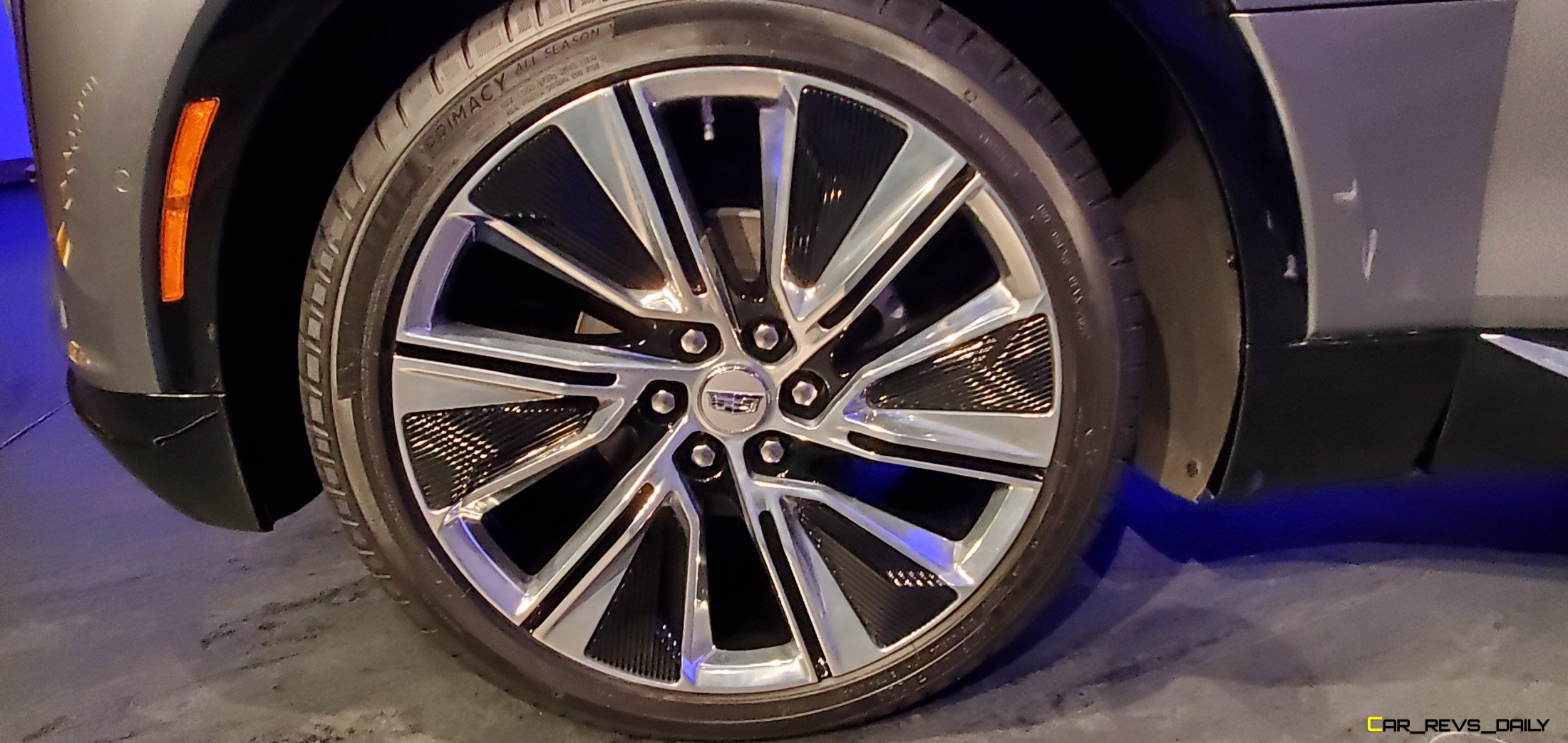
Cadillac Director of Design Brian Smith revealed that the Lyriq team wanted to reduce the impact that the cut lines had on aerodynamics and that they actually managed to make them smaller while also allowing them to be roughly flush with the bodywork. The Lyriq sticks with traditional steel body panels for the bulk of its construction (the liftgate is made out of a lightweight composite) but Lewis revealed that using steel allowed them to make some of the angles and cuts they wanted versus aluminum where the process is much tougher and requires specialized tools. Look for the steel suit of clothes to also benefit customers in the long run if the Lyriq ever gets into an accident due to the material being easier (and less expensive to work with) than aluminum.
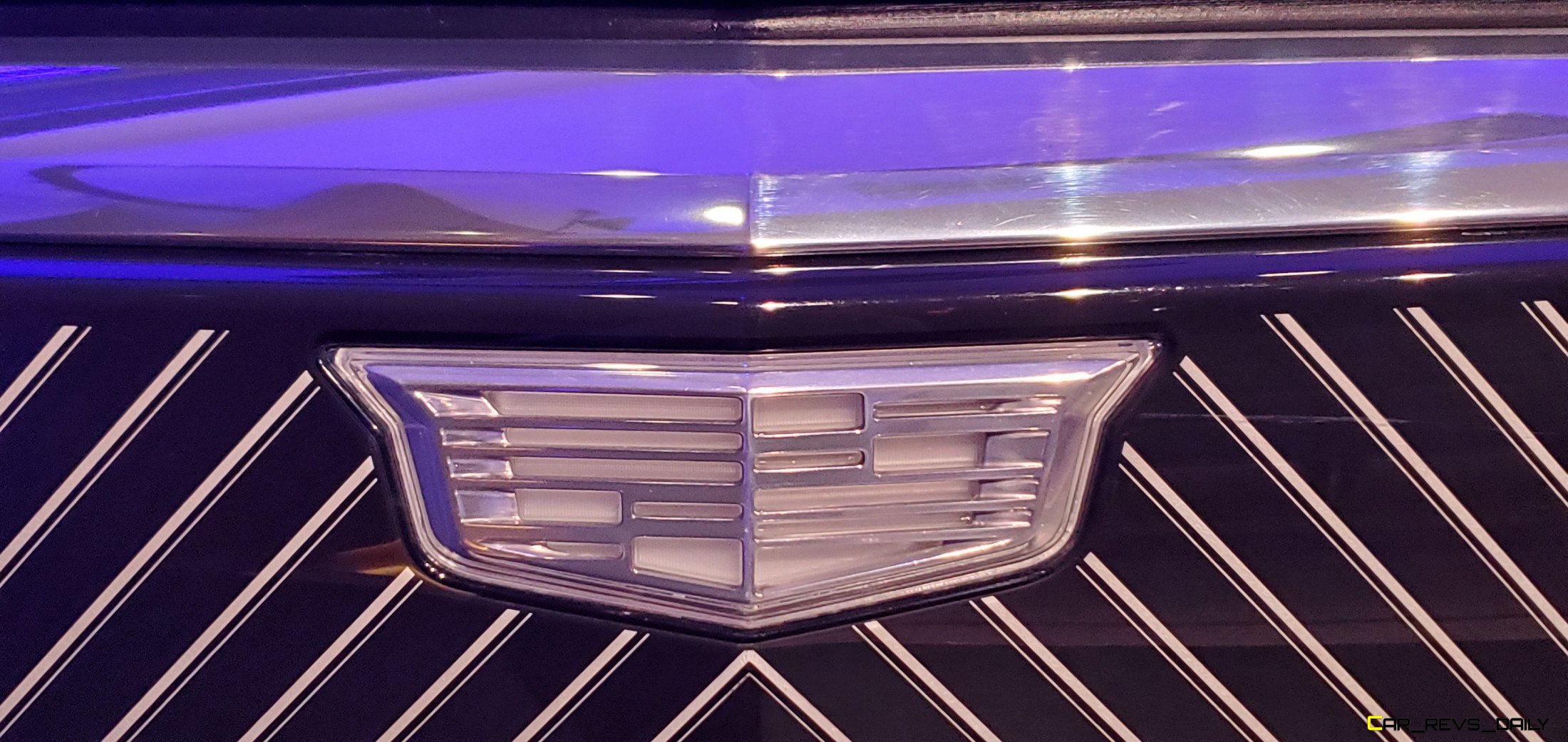
Another area that Smith and the team focused on was integrating certain things into the broader design (we saw a similar thing with the BMW iX a while back.) In this case, two particular applications caught our attention with the rear-mounted Cadillac crest serving as the button to open and close the liftgate versus having a separate piece that would’ve messed with the aerodynamics. The rear window also does not have a traditional rear wiper, with the window being cleaned instead by specially channeled blasts of air that actually allow water to be driven off the glass when the Lyriq is driven at speed. These changes may seem minor at first glance, but they add up to big gains when you look at the broader picture especially in aerodynamics and the reduced levels of drag that the Lyriq produces when slicing through the air.
Lyriq Interior Creates High Note In Quality And Technology
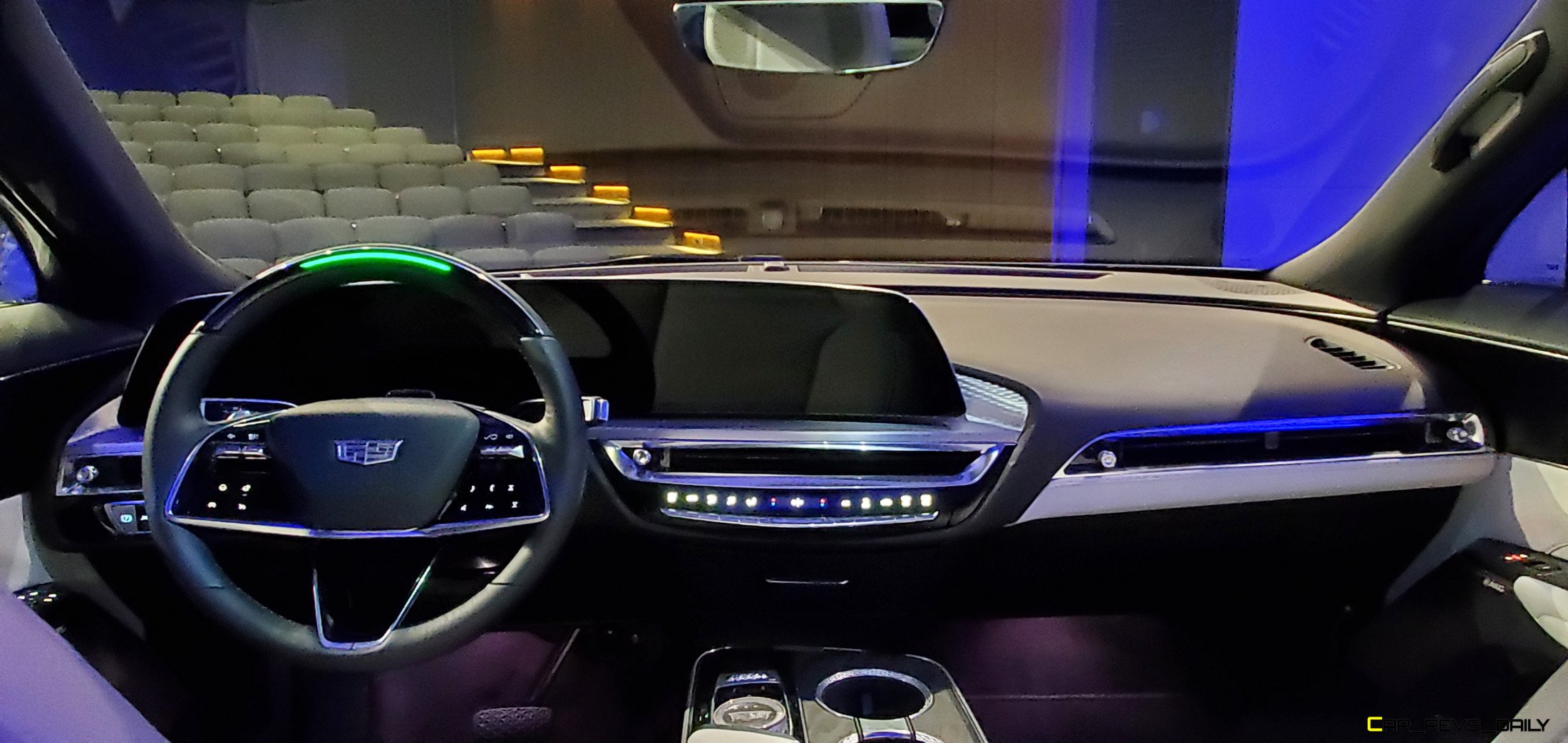
With the exterior creating a potent harmony of style and function, it would be a crime if the interior failed to deliver on its promise of being a luxury and technology-filled oasis. Slip inside and you’re greeted by a massive 33-inch curved display that not only serves as the instrument cluster but also as the infotainment screen. While it might resemble the three-screened OLED technology inside the 2021 Cadillac Escalade at first glance, that’s not the case, with the Lyriq using one massive LED screen to do the job. The screen can produce over 1 billion colors, and it looks very sharp when you see it in person.
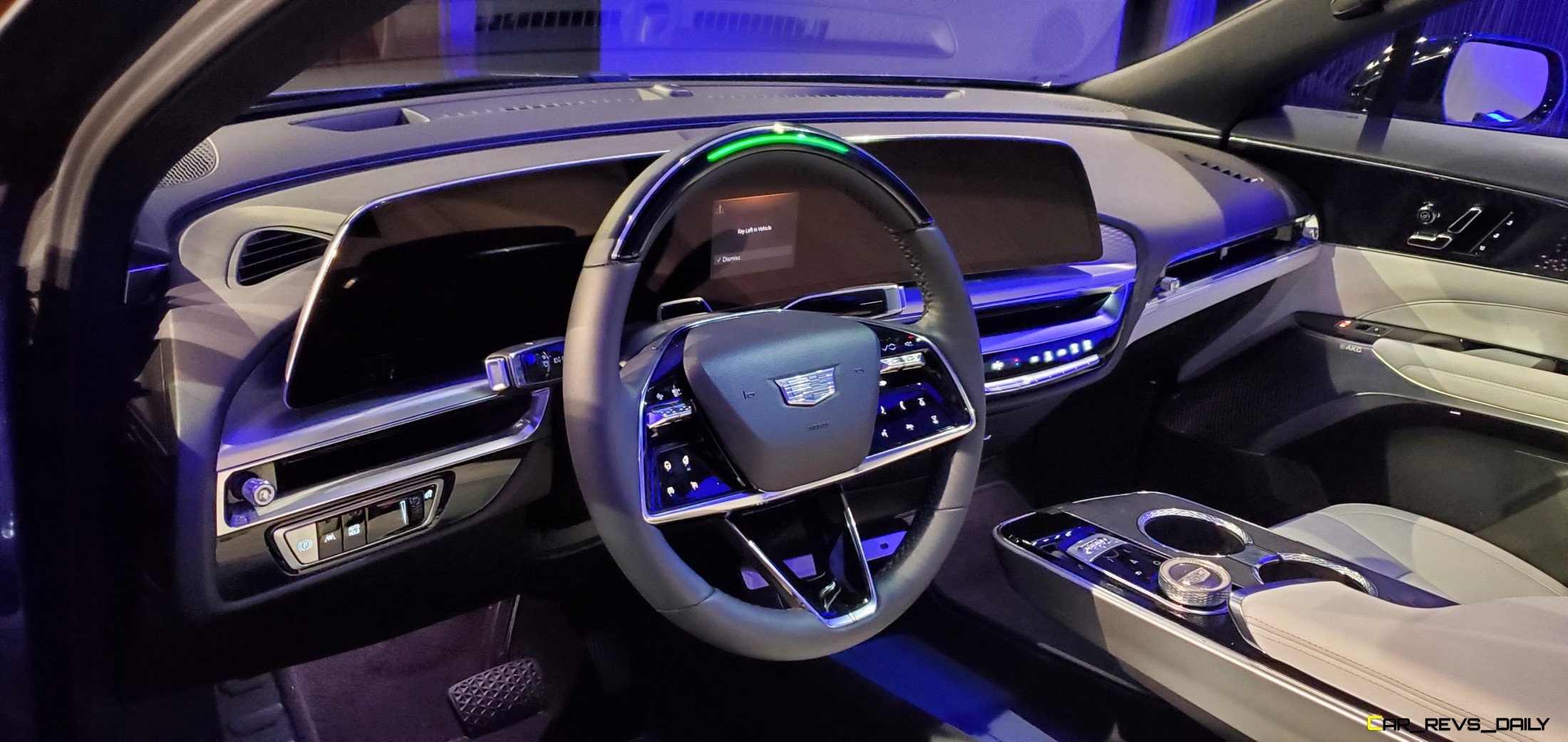
But there’s more than just a screen to look at here and as you move around the inviting cabin of the Lyriq other details come into the light. Tristan Murphy Manager of Cadillac interior design was quick to point out some of the novel solutions that Cadillac made in an attempt to make the Lyriq as inviting as possible to occupants. It all starts with the design which aims to be very roomy for occupants while still delivering the goods on luxury. The removal of the transmission tunnel allowed them to create a large storage space for bags and other items while a smaller storage drawer is lined with premium soft-touch material The wood accents feature laser inscribed patterns while the soft ambient lighting and the splashes of metal trim further enhance the atmosphere. Even the door handles were revamped with interior designers opting for an integrated look that blends in with the door sill (we were admittedly fooled by its camouflage before Murphy pointed them out to us.)
Knurled accents adorn some of the other controls and we even liked how Cadillac engineered the controls on the steering wheel. They are haptic feedback but to prevent accidental activation of features (if your hand brushes a button while turning for example) they are only programmed to work when it senses consistent pressure. The interior designers worked with the exterior team on a few occasions with the door-mounted speaker grilles being a prominent example of this example in action. Unlike other vehicles that use a flat speaker surface, the grilles in the Lyric not only wrap around the slice of the door they are in but also integrate nicely into the formal decorative piece on the upper part of the door.
They also play a role in some of the music-oriented features that are sprinkled into the EV. Murphy’s team worked with a gentleman that is not only an engineer but is also a classically trained musician. This unique pool of experience allowed them to focus on nailing the perfect harmonic tones for some of the Lyriq’s chimes, but also adding subtle touches like the active noise-canceling tech as well as a soft hum that replicates an Australian musical instrument to give drivers the sense of hearing an “engine noise” from the electric motors.
Ultium Battery Technolgy Will Shape GM’s Future
The lone question that remains unanswered is how the Lyriq drives. As mentioned, the Lyriq prototype that Cadillac let us look over was a late-stage prototype that was not quite ready to hit the road just yet but we still manage to learn a few things about it from Tim Grewe the Director of Electrification Strategy for Cadillac. Grewe revealed that the engineers behind Ultium used what they learned from past GM EV vehicles to help create and hone the battery technology for production. This cycle of learning is ongoing as we speak with the team actually paying attention to some of the events surrounding the Bolt’s ongoing battery troubles and making notes to better the Ultium side of the coin.
As for the batteries themselves, the pouch-style cells were designed for maximum flexibility with each one having the ability to be stacked either vertically or horizontally inside the battery pack. This ability allowed engineers to help create a wide range of battery and energy types for various electric models and they actually work hand in hand with the Lyriq’s modular platform. Ultium also makes good use of wireless battery management technology which reduces the number of wires in the battery pack and allows OTA updates. Grewe also highlighted the flexibility that this setup brings to customers and how it can be tailored to a wide range of segments. Fewer wires and better long-term performance is always a very welcoming combination, and we look forward to experiencing it out on the road when the Lyriq is ready to strut its stuff.
Thankfully the wait for the Lyriq is in the homestretch, with Cadillac set to begin Lyriq production early next year. The EV will have a base price of $59,990 and it will be produced in GM’s Spring Hill, Tenessee plant. This pricing is before green tax credits are factored in, and Cadillac is clearly positioning the Lyriq as a flagship offering in its electrified slice of the utility market. We also asked about Cadillac’s upcoming Celstiq sedan which will be the sedan equivalent of an EV flagship. Reps assured us that the Celstiq will still play an important role in Cadilac’s long-term EV plans, and are letting the Lyriq have a chance to shine in the spotlight while the fore-mentioned Celstiq is getting final tweaks before its global debut.

Carl Malek has been an automotive journalist for over 10 years. First starting out as a freelance photographer before making the transition to writing during college, his work has appeared on numerous automotive forums as well as websites such as Autoshopper.com.
Carl is also a big fan of British vehicles with the bulk of his devotion going to the Morgan Motor Company as well as offerings from Lotus, MG, and Caterham. When he is not writing about automobiles, Carl enjoys spending time with his family and friends in the Metro Detroit area, as well as spending time with his adorable pets.

